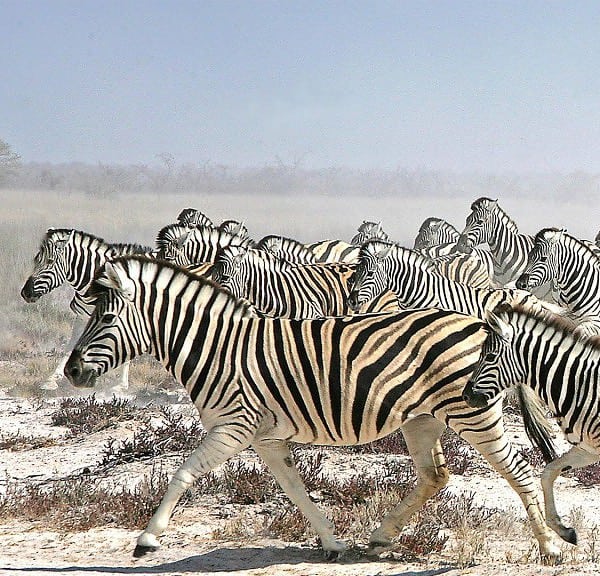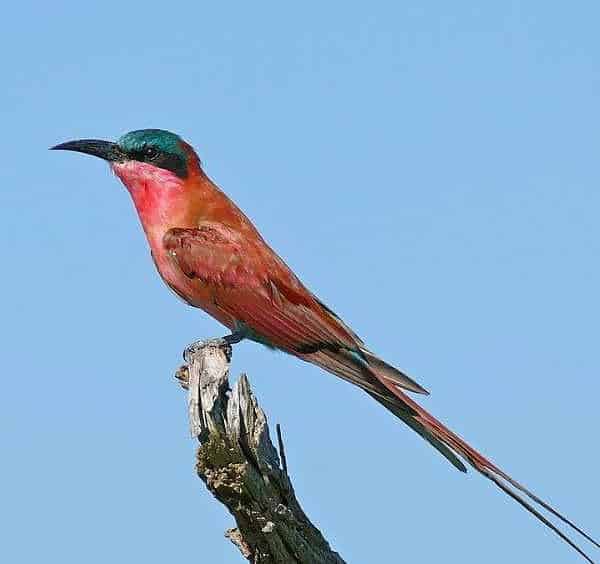There are many causes wildlife-lovers will wish to go to Botswana-right here’s simply three of them.
1. Zebra migrations

Rather than merely following the herd, Botswana’s zebra populations illustrate extra selective migratory behaviour, eschewing a single mass motion in favour of a number of distinct migrations, which collectively create a community of pock-marked trails crisscrossing the nation. The journeys all happen after the rains, when, untethered from the must be near a everlasting water supply, the zebras transfer to hunt essentially the most nutritious grass.
The largest migration is from the Chobe and Linyanti rivers to Savute and, it was not too long ago found, at the same time as far south as Nxai Pan, a lung-busting 1000km spherical trek, which trumps the gap travelled by the extra celebrated Serengeti ungulates. The second main motion is from the western Makgadikgadi to the east of the park. In addition to those, it was not too long ago found that a few of the Okavango zebra herds additionally journey to the jap Makgadikgadi (one other outstanding 590km spherical journey), whereas a few of the western Makgadikgadi populations head to Nxai Pan. And, as if to confuse issues much more, some zebras simply keep put within the Okavango Delta all 12 months!
To get the most effective view of the herds, head to Savute, Nxai Pan or the jap Makgadkigadi between December and April (actual timings depend upon the rain). Alternatively, within the dry season, essentially the most dramatic zebra sightings are within the western Makgadikgadi between June and October.

2. Carmine bee-eaters
One of my favorite spectacles, assured to enthral even avowed non-twitchers, is a carmine bee-eater breeding colony, the place 1000’s of crimson birds take to the air on a by no means-ending seek for bugs to maintain their ravenous chicks. Nesting websites will be in cliffs, or surprisingly (given the vulnerability) on flat open floor. Both Moremi and Linyanti frequently host the colonies, which are inclined to return to the identical space between September and December every year.
Around January head to Savute, the place you’ll be able to watch the adults give their younger looking classes, often whereas using on the again of Africa’s heaviest flying hen, the kori bustard.

3. Wild canines
As Africa’s second rarest carnivore, wild canines are on most safari connoisseurs’ want lists, and Botswana is without doubt one of the finest locations to see them. Packs are inclined to den round June for 3 months till the pups are sufficiently old to be taken looking. Given they den in a special spot every year, discovering them throughout this era is essentially a matter of luck, however you’ll in all probability have a greater probability in a non-public concession the place there are not any restrictions on the place autos can journey and the place guides could have already sussed a location. If a den is found, you might be virtually assured a sighting and will even see the tiny pups begging for meals from the adults.
After September, the pups are chaperoned by an grownup as they battle to maintain up with the indefatigable pack throughout a hunt. This will be useful for sightings for the reason that pack must reconvene after a hunt and can contact one another with a sonorous horn-like name that reverberates all through the bush. As with all predators, the tall grass that sprouts after the rains makes the canines tougher to identify after January.
Packs are situated all through Moremi, the Okavango Delta, Linyanti, Kwando, Selinda, Savute and the remainder of Chobe National Park, and are often even noticed as far south as Nxai pan and CKGR.
Walking wild
If you wish to contact the soul of Africa, and actually get a greater understanding of this wonderful continent, do it on foot. There is not any expertise that I can consider that so connects one to Africa than strolling amongst its wildlife.
Walking safaris, both hours-lengthy or day-lengthy, have gotten increasingly more common in Botswana. The guides that lead them are conscious, skilled, extremely proficient and armed. Of course there’s a frisson of concern for the provoke, however the exhilaration of the primary sighting sweeps it away. One can not scent the buffalo and listen to the calling of their calves, nor watch from the land’s edge the battling hippo, nor research the suckling elephant babe with out realising that, on foot, you might be in one other world; a pristine, untouched setting shared by few.
You are all of the sudden not a customer; you might be a part of the setting. You are susceptible, in a way alone; it’s humbling, even a little bit scary. You will really feel elevated and on a excessive, and can have a reminiscence that can endure for all times. You can have shared an intimacy with our mammals and seen the sights, sensed the smells and heard the sounds of the birds, bugs, termites, in a means unimaginable from a car. Do it.

